Posted on February 6th, 2020 by Mary Lord
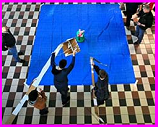 A classic engineering challenge involves designing and building devices that can deliver necessary goods to “Toxic Island,” an island that has been quarantined by the World Health Organization due to a nasty outbreak of disease. Working within specific constraints, including limited materials, middle school students follow the engineering design process to design, test, and improve a device that can deliver “medicine” and other vital supplies accurately and quickly without touching either the water or island.
A classic engineering challenge involves designing and building devices that can deliver necessary goods to “Toxic Island,” an island that has been quarantined by the World Health Organization due to a nasty outbreak of disease. Working within specific constraints, including limited materials, middle school students follow the engineering design process to design, test, and improve a device that can deliver “medicine” and other vital supplies accurately and quickly without touching either the water or island.
Read More
Filed under: Class Activities, Grades 9-12, Grades 9-12, Lesson Plans | Comments Off on Toxic Island: Design Devices to Deliver Goods
Tags: Biomedical Engineering, Class Activities, commerce, delivery, Design, engineering design challenge, Engineering Design Process, Grades 9-12, Lesson Plan, maker challenges, pandemic, public health
Posted on February 1st, 2020 by ASEE
 In this lesson from Newton’s Apple, students learn about the engineering behind air bags, including the concepts of momentum and force. They then conduct a related experiment, cushioning the “crash” of a raw egg.
In this lesson from Newton’s Apple, students learn about the engineering behind air bags, including the concepts of momentum and force. They then conduct a related experiment, cushioning the “crash” of a raw egg.
Read More
Filed under: Class Activities, Grades 6-8, Grades 9-12 | Comments Off on Activity: Airbags and Collisions
Tags: Automotive engineering, Class Activities, design constraints, Egg drop, Ethics in engineering, Grades 6-8, Grades 9-12, Safety engineering
Posted on December 17th, 2019 by Mary Lord
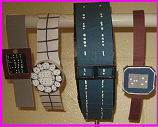 Students in grades 6 to 8 follow the engineering design process while combining mechanical engineering and bioengineering to create a new wristwatch face for a visually impaired student at their school. Teams present their designs to the class and construct prototypes of a watch face that doesn’t rely on sight to tell time.
Students in grades 6 to 8 follow the engineering design process while combining mechanical engineering and bioengineering to create a new wristwatch face for a visually impaired student at their school. Teams present their designs to the class and construct prototypes of a watch face that doesn’t rely on sight to tell time.
Read More
Filed under: Class Activities, Grades 6-8, Grades 6-8, Lesson Plans | Comments Off on Wristwatch Design for the Visually Impaired
Tags: accessibility, assistive devices, bioengineering, Class Activities, Engineering Design Process, Grades 6-8, Human-centered design, Lesson Plans, Mechanical engineering, NGSS aligned activity, teachengineering, visually impaired students, wristwatch
Posted on December 17th, 2019 by Mary Lord
 High school students practice human-centered design by imagining, designing, and prototyping a product to improve classroom accessibility for the visually impaired. The begin by wearing low-vision simulation goggles (or blindfolds) and walking with canes to navigate through a classroom in order to experience what it feels like to be visually impaired.
High school students practice human-centered design by imagining, designing, and prototyping a product to improve classroom accessibility for the visually impaired. The begin by wearing low-vision simulation goggles (or blindfolds) and walking with canes to navigate through a classroom in order to experience what it feels like to be visually impaired.
Read More
Filed under: Class Activities, Grades 9-12, Grades 9-12, Lesson Plans | Comments Off on Redesigning a Classroom for the Visually Impaired
Tags: accessibility, Class Activities, Engineering Design Process, Grades 9-12, Human-centered design, sight-impaired
Posted on October 21st, 2019 by ASEE
 This simple catapult activity for students in grades 4 – 8 teaches them how energy is transferred when a plastic spoon is pulled back, then released, rocketing its payload — a single marshmallow.
This simple catapult activity for students in grades 4 – 8 teaches them how energy is transferred when a plastic spoon is pulled back, then released, rocketing its payload — a single marshmallow.
Read More
Filed under: Class Activities, Grades 6-8, Grades K-5, Grades K-5, Lesson Plans | Comments Off on Activity: Catapult Marshmallow Launch
Tags: catapult, Class Activities, Energy, forces and motion, Fun & Games, Grades 4 - 8, Grades K-5, Newton's Laws, NGSS, Physical Science, Physics, trebuchet
Posted on September 27th, 2019 by Mary Lord
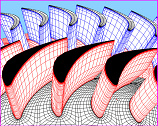 To help teachers and students as young as six explore the rewarding fields of computer science and engineering, eGFI has compiled this list of activities, free online courses, computer animations, and other resources.
To help teachers and students as young as six explore the rewarding fields of computer science and engineering, eGFI has compiled this list of activities, free online courses, computer animations, and other resources.
Read More
Filed under: For Teachers, Grades 6-8, Grades 9-12, Grades K-5, Web Resources | Comments Off on Computer Science Resources
Tags: apps, Class Activities, code.org, Computer Engineering, Computer Programming, Computer Science, Grades 6-8, Grades 9-12, Grades K-5, Internet Resources, Khan Academy, Lesson Plans, MIT, Resources for Teachers, software engineering, Web Resources
Posted on September 26th, 2019 by Mary Lord
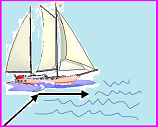 Middle school students learn the concept of dead reckoning by using vectors to plot a course based on a time and speed, then correct their positions with vectors representing winds and currents. Includes a link to related activities on navigation and creating nautical charts.
Middle school students learn the concept of dead reckoning by using vectors to plot a course based on a time and speed, then correct their positions with vectors representing winds and currents. Includes a link to related activities on navigation and creating nautical charts.
Read More
Filed under: Class Activities, Grades 6-8, Lesson Plans | Comments Off on Vector Voyage!
Tags: Aerospace Engineering, Class Activities, Geography, GPS, Grades 6-8, Lesson Plan, Mathematics, nautical charts, naval engineering, navigation, Physics, teachengineering, vectors
Posted on September 23rd, 2019 by ASEE
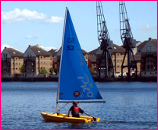 In this lesson, students in grades 2 – 7 use simple materials to design and make model sailboats that must stay upright and sail straight in a testing tank. They will learn the basic components of a ship and how design represents a tradeoff between speed, stability, and ease of handling.
In this lesson, students in grades 2 – 7 use simple materials to design and make model sailboats that must stay upright and sail straight in a testing tank. They will learn the basic components of a ship and how design represents a tradeoff between speed, stability, and ease of handling.
Read More
Filed under: Class Activities, Grades 6-8, Grades 6-8, Grades K-5, Grades K-5, Lesson Plans | 1 Comment »
Tags: buoyancy, Class Activities, Lesson Plan, Ocean, sailboat, wind power
Posted on September 4th, 2019 by Mary Lord
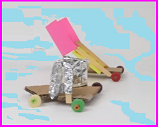 Elementary students learn about wind and kinetic and renewable energy while following the steps of the engineering design process to imagine, create, test, evaluate, and refine small, wind-powered sail cars built from limited quantities of drinking straws, masking tape, paper, and beads. Teams of two then compete to see which sail-car travels the farthest when pushed by the wind (simulated by the use of an electric fan).
Elementary students learn about wind and kinetic and renewable energy while following the steps of the engineering design process to imagine, create, test, evaluate, and refine small, wind-powered sail cars built from limited quantities of drinking straws, masking tape, paper, and beads. Teams of two then compete to see which sail-car travels the farthest when pushed by the wind (simulated by the use of an electric fan).
Note: This NGSS-aligned activity is part of a unit in which multiple activities are brought together for an all-day school/multi-school concluding “engineering field day” competition.
Read More
Filed under: Class Activities, Grades K-5, Lesson Plans | Comments Off on Wind-Powered Sail Cars
Tags: Class Activities, Competitions for Students, Engineering Design Process, Grades K-5, Lesson Plan, sail cars, teachengineering, wind power
 A classic engineering challenge involves designing and building devices that can deliver necessary goods to “Toxic Island,” an island that has been quarantined by the World Health Organization due to a nasty outbreak of disease. Working within specific constraints, including limited materials, middle school students follow the engineering design process to design, test, and improve a device that can deliver “medicine” and other vital supplies accurately and quickly without touching either the water or island.
A classic engineering challenge involves designing and building devices that can deliver necessary goods to “Toxic Island,” an island that has been quarantined by the World Health Organization due to a nasty outbreak of disease. Working within specific constraints, including limited materials, middle school students follow the engineering design process to design, test, and improve a device that can deliver “medicine” and other vital supplies accurately and quickly without touching either the water or island.








 In this lesson from Newton’s Apple, students learn about the engineering behind air bags, including the concepts of momentum and force. They then conduct a related experiment, cushioning the “crash” of a raw egg.
In this lesson from Newton’s Apple, students learn about the engineering behind air bags, including the concepts of momentum and force. They then conduct a related experiment, cushioning the “crash” of a raw egg. Students in grades 6 to 8 follow the engineering design process while combining mechanical engineering and bioengineering to create a new wristwatch face for a visually impaired student at their school. Teams present their designs to the class and construct prototypes of a watch face that doesn’t rely on sight to tell time.
Students in grades 6 to 8 follow the engineering design process while combining mechanical engineering and bioengineering to create a new wristwatch face for a visually impaired student at their school. Teams present their designs to the class and construct prototypes of a watch face that doesn’t rely on sight to tell time. High school students practice human-centered design by imagining, designing, and prototyping a product to improve classroom accessibility for the visually impaired. The begin by wearing low-vision simulation goggles (or blindfolds) and walking with canes to navigate through a classroom in order to experience what it feels like to be visually impaired.
High school students practice human-centered design by imagining, designing, and prototyping a product to improve classroom accessibility for the visually impaired. The begin by wearing low-vision simulation goggles (or blindfolds) and walking with canes to navigate through a classroom in order to experience what it feels like to be visually impaired.  This simple catapult activity for students in grades 4 – 8 teaches them how energy is transferred when a plastic spoon is pulled back, then released, rocketing its payload — a single marshmallow.
This simple catapult activity for students in grades 4 – 8 teaches them how energy is transferred when a plastic spoon is pulled back, then released, rocketing its payload — a single marshmallow. To help teachers and students as young as six explore the rewarding fields of computer science and engineering, eGFI has compiled this list of activities, free online courses, computer animations, and other resources.
To help teachers and students as young as six explore the rewarding fields of computer science and engineering, eGFI has compiled this list of activities, free online courses, computer animations, and other resources. Middle school students learn the concept of dead reckoning by using vectors to plot a course based on a time and speed, then correct their positions with vectors representing winds and currents. Includes a link to related activities on navigation and creating nautical charts.
Middle school students learn the concept of dead reckoning by using vectors to plot a course based on a time and speed, then correct their positions with vectors representing winds and currents. Includes a link to related activities on navigation and creating nautical charts. In this lesson, students in grades 2 – 7 use simple materials to design and make model sailboats that must stay upright and sail straight in a testing tank. They will learn the basic components of a ship and how design represents a tradeoff between speed, stability, and ease of handling.
In this lesson, students in grades 2 – 7 use simple materials to design and make model sailboats that must stay upright and sail straight in a testing tank. They will learn the basic components of a ship and how design represents a tradeoff between speed, stability, and ease of handling. Elementary students learn about wind and kinetic and renewable energy while following the steps of the engineering design process to imagine, create, test, evaluate, and refine small, wind-powered sail cars built from limited quantities of drinking straws, masking tape, paper, and beads. Teams of two then compete to see which sail-car travels the farthest when pushed by the wind (simulated by the use of an electric fan).
Elementary students learn about wind and kinetic and renewable energy while following the steps of the engineering design process to imagine, create, test, evaluate, and refine small, wind-powered sail cars built from limited quantities of drinking straws, masking tape, paper, and beads. Teams of two then compete to see which sail-car travels the farthest when pushed by the wind (simulated by the use of an electric fan).